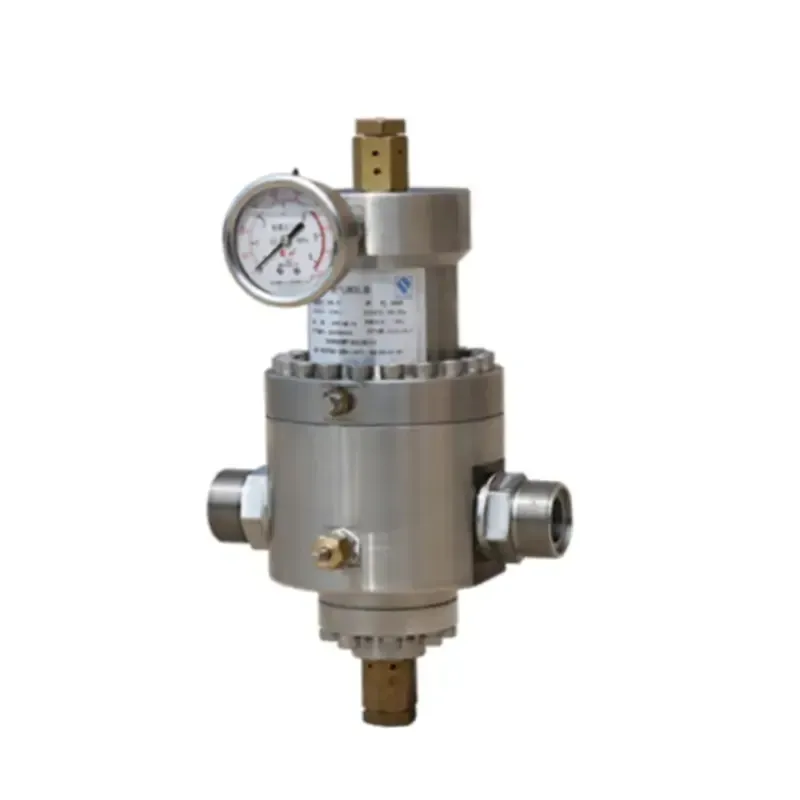
Nov . 29, 2024 20:09
Back to list
Pressure Regulator and Its Importance in Fluid Systems
Understanding Pressure Regulation The Importance of Pressure Manifold Systems
In various fields, particularly in industrial, automotive, and medical applications, maintaining an optimal level of pressure is crucial for equipment efficiency, safety, and overall performance. A pressure manifold system serves as a critical component in regulating and managing pressure in pipelines, tanks, and machinery. This article will explore the functions, benefits, and implementation of pressure regulation systems, emphasizing their importance across different industries.
What is a Pressure Regulation System?
A pressure regulation system is designed to control and maintain the pressure within a specified range. It typically integrates various components, including regulators, gauges, valves, and manifolds, which work together to ensure stable pressure output. The system’s primary function is to reduce high input pressure to a desired lower output pressure, providing a consistent supply of fluids or gases to various processes and equipment.
Importance of Pressure Regulation
1. Safety High pressure can pose significant risks, including equipment failure, leaks, or even explosions, especially in hazardous environments. Pressure regulation systems act as a safety measure by ensuring that pressure levels remain within safe limits. In industries such as oil and gas, where high-pressure systems are common, the lack of adequate pressure regulation can lead to catastrophic accidents.
2. Efficiency Maintaining optimal pressure levels allows equipment to function efficiently, reducing energy consumption and operational costs. For example, in pneumatic systems, proper pressure regulation can enhance the performance of air-driven tools and machinery, leading to increased productivity and reduced wear and tear on equipment.
3. Precision In medical applications, such as anesthesiology, precise pressure regulation is essential. Anesthesia machines require accurate pressure control to deliver the correct dosages of anesthetic gases. A failure in pressure regulation can lead to serious complications for patients.
4. Consistency In manufacturing processes, consistent pressure is vital for product quality. Variations in pressure can result in defects or variations in the end product, leading to increased waste and rework. Pressure regulation ensures that processes remain stable and consistent over time.
Components of a Pressure Regulation System
.
- Pressure Regulators These devices automatically adjust and control the pressure level in a system. They can be preset or adjustable and are designed to respond to changes in input pressure while maintaining a steady output pressure.
منظم الضغط

- Manifolds These are central hubs that distribute pressure to different branches of a system. Manifolds can also integrate multiple regulators, allowing for more complex pressure control in larger systems.
- Valves Control valves help manage the flow of fluids or gases within the system. They can be manually or automatically operated to adjust flow rates and pressure levels.
- Pressure Gauges These devices provide real-time pressure readings, allowing operators to monitor pressure levels and ensure they remain within specified limits.
Implementing a Pressure Regulation System
When implementing a pressure regulation system, several factors must be considered
1. System Requirements Understanding the specific pressure requirements for your application is critical for selecting the right components and ensuring optimal performance.
2. Compatibility Ensure that all components of the pressure regulation system are compatible with the fluids or gases being used. Materials should be resistant to corrosion or degradation.
3. Regulatory Compliance Compliance with industry standards and regulations is essential, especially in sectors like healthcare and food manufacturing.
4. Maintenance Regular maintenance is critical for ensuring the longevity and reliability of pressure regulation systems. Routine checks and calibration can prevent unexpected failures.
Conclusion
Pressure regulation is a vital aspect of many industrial and technological processes. By implementing effective pressure regulation systems, organizations can enhance safety, efficiency, and product quality while minimizing risks associated with pressure fluctuations. As industries continue to evolve and technology advances, the importance of robust pressure regulation systems will only become more pronounced, underscoring their essential role in modern operations.
Latest news
-
Safety Valve Spring-Loaded Design Overpressure ProtectionNewsJul.25,2025
-
Precision Voltage Regulator AC5 Accuracy Grade PerformanceNewsJul.25,2025
-
Natural Gas Pressure Regulating Skid Industrial Pipeline ApplicationsNewsJul.25,2025
-
Natural Gas Filter Stainless Steel Mesh Element DesignNewsJul.25,2025
-
Gas Pressure Regulator Valve Direct-Acting Spring-Loaded DesignNewsJul.25,2025
-
Decompression Equipment Multi-Stage Heat Exchange System DesignNewsJul.25,2025

